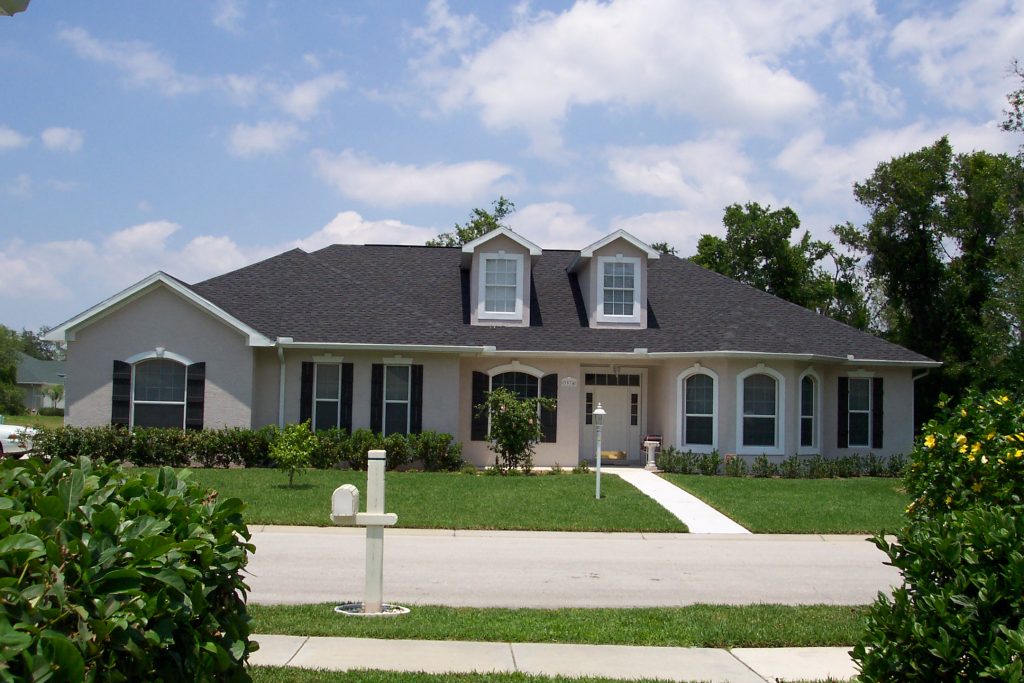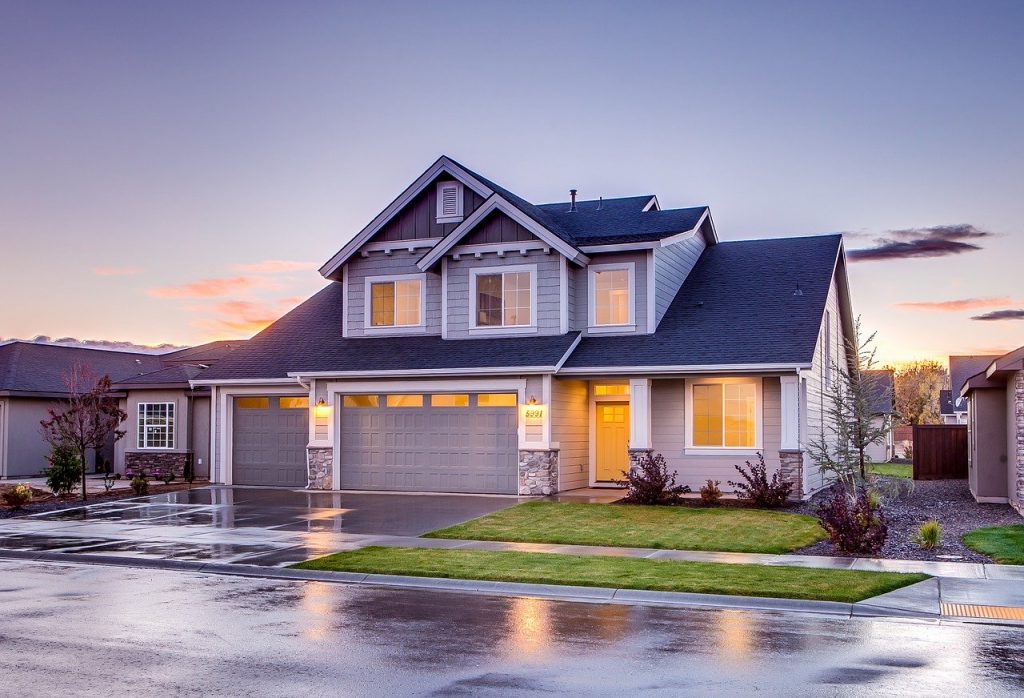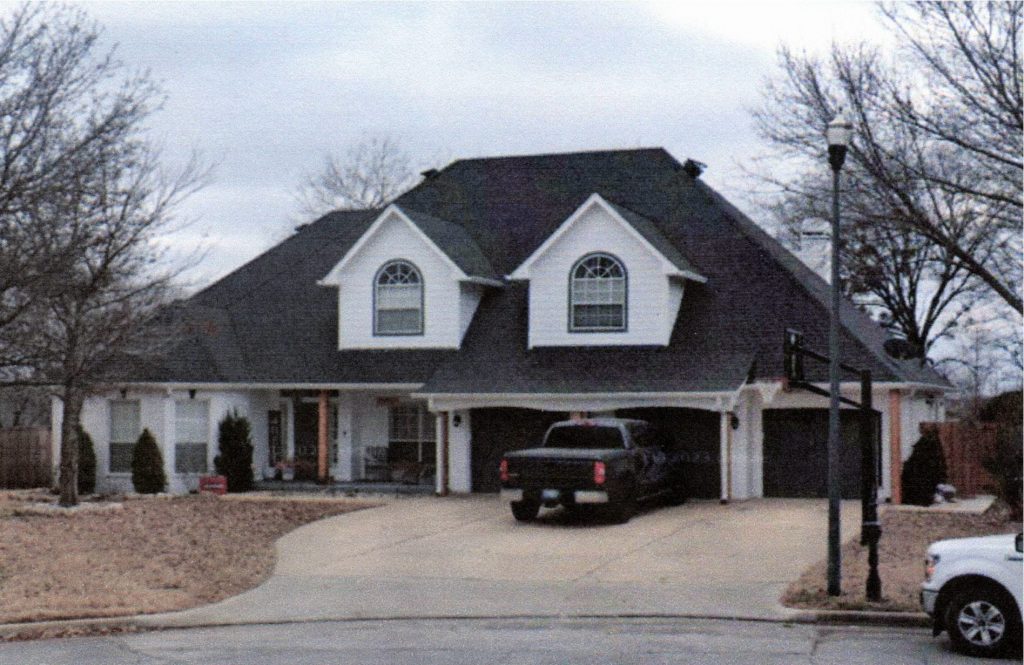QUALITY AFFORDABLE HOMES
& CONSULTANTS Along with.........
SAFE HAVEN HOMES Come Together
to Give You the Ultimate in .......
a Safe, Energy Independent, Secure, “Smart Home” that can provide you not only a primary residence but incorporate both retreat and refuge living capability and more. Moreover, when combined with the “Smart Home Program (SHP)” it can also become a powerful wealth generation asset. Truly, the best of the best in home ownership well worth your investigation. (SCROLL BELOW for more info).
Look What the "Smart Home" and
"Smart Home Program(SHP)" Can Do
In this section we begin showing different price comparisons with the same home that will help you to see the incredible financial benefits that a “Smart Home” in combination with the Smart Home Program (SHP)” can accomplish. Below we give a comparison renting a similar house as opposed to buying a “Smart Home” and using the “Smart Home Program”. As you will see, the rewards for employing this plan can be very rewarding.
Amount saved with renting for 30 years = $0
with a 16 year “Smart Home and SHP” = $873,050
30 year “Smart Home and SHP” = $1,846,546




What is a "Smart Home"
Although a Quality Affordable Home (QAH) “Smart” home uses some of the latest “green” construction techniques and computerized tech innovations, the original meaning of this term is based on helping families understand the powerful wealth building aspect of home ownership designed in a “Smart Home” format. A “Smart Home” is one of the most versatile homes available. Here is a listing of just some of the benefits a “Smart Home” can provide…
-Empty nesters who desire to take care of in-laws or family members needing housing assistance.
-A means to help others: young adults just getting started, single mothers, missionaries, etc.
-Provide additional income by renting on a long or short term basis via by yourself, Airbnb, VRBO (Vacation Rentals By Owners) and other such services.
The versatility of a “Smart Home” is that the home is constructed in such a way to provide as much privacy and sound dampening as possible while being utilized by others. Then, when the home needs to revert back to its “single family” status, it’s already set up to work in exactly this capacity without tedious or expensive modifications. Check out our “Smart Home” plans to see the layout potential or for a pictorial representation, check out “Tour a Smart Home” in the link above.
Also, make sure you check out our “Benefits of Home Ownership” link, if you have not done so yet, after finishing this section. In that section we detail why a single family residence can be one of your most important and valuable assets you can own.
Finally, by using the “Smart Home Program” for longer term wealth generation, we show how you can realistically become a millionaire (or much more) within the time frame of a typical 30 year mortgage, found in the “Realistically Become a Millionaire” in the menu link above.
How Does the "Smart Home Program" Work?
In “The Benefits of Home Ownership”, which we call Phase I of the “Smart Home Program”, we investigated the comparison to renting, buying a standard single family home and using the “Smart Home Program” within the time frame of a standard 30 year mortgage. For those of you who have already read that section, please head right down to Phase II if you like. In Phase II, we explain in greater detail the added saving features that are possible with the “Smart Home Program”, especially if we use the income of the “Smart Home” to accelerate the payments on a standard 30 year mortgage. In so doing, you can pay-off a standard 30 year mortgage in only 16 years and 3 months. In the latter 14 years and 9 months (to complete the remainder of the 30 year mortgage time frame), we feature an added layer of blessings that comes from owning a “Smart Home”. This added layer alone could realistically allow you to become a millionaire (and beyond) as pointed out in “Realistically Become a Millionaire” link. We hope you’ll fully investigate this example to appreciate the incredible wealth enhancement capabilities possible with this program.
Phase I
This section was initially introduced in the “Benefits to Home Ownership” section. If you have read that, feel free to go to the next section titled “Phase II” (if you haven’t read the Phase I section yet, or would like a quick refresher, continue on as it’s offered below.
Let’s take a look at some of the initial benefits that can be derived from utilizing the “Smart Home Program” which we introduce in this section. Consider that we can generate a conservative $850/month income with the rental “addition” of the Smart Home. As an example, if we built a Smart Home for $400,000 at a 5% fixed interest rate, your monthly payment would be $2,147.29. Remember, this does not include property tax, house insurance and private mortgage insurance (PMI is insurance to cover payment of the entire mortgage in case of death, disability or any reason you cannot pay-off the mortgage. It’s usually required if you put less than a 20% downpayment and represents 1/2% – 2% of the total mortgage to be covered). We calculate the total of these additional expenses at about $400 monthly (not including PMI). Adding the mortgage with house insurance and taxes now brings us to a total of about $2,500/month.
However, by subtracting out the $850/monthly rental income that can be derived from the “Smart Home Program”, we are able to reduce our monthly mortgage payment to $1,650 ($2,500 – $850 = $1,650). This makes the mortgage not only more manageable to pay, but offers additional funding to pay bills, purchase additional items for the house, apply to savings and so forth.
Another way to view this would be on a yearly basis. At a monthly payment of $2,500, your total housing expense (mortgage, taxes, house ins. and PMI) comes out at $30,000 yearly. The monthly income generated by the “addition” totals $10,200 yearly. In this way we reduce the $30,000 house payment total down to $19,800. And over the life of a 30 year mortgage the total income generated from the rental “addition” would be $306,000 ($850 x 12 mo/year x 30 years = $306,000)! Friend, this is not “chicken feed” and paints a realistic picture for serious debt reduction, investment, and the beginnings of a robust retirement savings program.
In Part II of the “Smart Home Program” we explain in greater detail the finer aspects of how you can reduce the length of your mortgage so that you save more. This incorporates a number of useful tools which we hope you will take advantage of as you embark on establishing your home in, of course, in a “Smart” way.
Phase II
In the section, “Benefits of Home Ownership” we covered the strategies that can be used to enhance your financial position relative to home ownership and accelerate wealth generation regarding it, whether you build or buy an existing home. This is directly applicable to how the “Smart Home Program” works. Now, let’s put it all together with the goal to pay off a 30 year mortgage as soon as possible by using the “Smart Home Program.”
As we just moved into our new “Smart Home” we find out that a friend has a daughter who would like to rent out our two bedroom “in-law” apartment for $850. When she found out it included the utilities (including cable with Wifi), she was ecstatic. Why shouldn’t she be, when electric, water, heat and cable would probably cost her an extra $125 – $175 monthly in typical apartment rentals. So, for all practical purposes, she was getting an apartment for around $700/month, a real deal in today’s high cost rental market (this would be reason enough to possibly charge $900 – $1,000/month. However, we’ll stick with a conservative $850/month.)
We decided to apply the full $850 rent to the mortgage payment to accelerate paying of the principle by using what is commonly referred to as “The “Banker’s Secret” which was covered in the “Benefits of Home Ownership” section. We learned that any amount you pay over and above the monthly mortgage goes directly into paying off the principle. Hence, with a $2,147 monthly mortgage, by adding $850 to the payment, we are now paying a total of $3,000/month ($2,147 monthly mortgage payment + $850 = $2,997, which for practical purposes = $3,000). So what’s the upside in doing this? We were able to pay off our mortgage in only 16 years and 3 months! That’s a HUGH upside! Instead of having to pay a total of $373,023 of interest during the course of a 30 year mortgage, we only pay $185,374 in interest, saving us a whopping $187,649 just by employing this strategy ($373,023 – $185,374 = $187,649). WOW!!! Then, in addition to saving all this money, we have the added benefit of paying off a 30 mortgage in only 16 years and 3 months. What a MILESTONE achievement! As the saying goes, we are happy campers. Oh, let’s not forget that we also saved on our income tax payments as discussed in the “Benefits of Home Ownership” section which we cover below to give us the “BIGGER Picture”.
An important side note. Without performing the mortgage calculations we are giving in this presentation, most people have no idea the kind of money they can save or make with a single family home. Our example serves to counter this problem.
However, we need to make one caveat to the examples given. Our example is using an optimistic scenario. More than likely you would not have a renter stay for the full time frame we’ve used in this example. In this regard, we want to say that during the course of normal life, there can be periods that you may not be able to obtain or even desire to have a renter(s). However, these hypothetical examples are meant to show you the possibilities using the powerful financial tools that the “Smart Home Program” can employ. Certainly we are potentially using the highest level of success with our example. However, even if you use this program 50% of the time, you will still profit hansomely from it.
We also need to mention that in this example, we have used a financial tool of paying down a mortgage, otherwise known as “The Banker’s Secret”. In essence, we are using a strategy to counter the effects of an amortized loan that is used in mortgage interest rate calculations. For a deeper explanation of the mechanics of how this works, again, check out the section “Benefits of Home Ownership” if you haven’t done so already. In the next section we consider tax ramifications and the benefit of interest costs which are allowed as a tax deduction. These tax advantages also have the potential to save the homeowner a ton of money.
Additional Tax Ramifications
In the “Benefits to Homes Ownership” section, we were able to show how a homeowner could save an additional $11,384 per year in direct tax savings by using the IRS allowance to deduct mortgage interest from your income.
In this condensed version as given in our “Benefits to Home Ownership” section, we took a married couple with a combined income of $90,000. The federal tax rate in 2023 for a married couple making $90,000 yearly is 22%, From this, your tax due for the year would normally be $19,800 ($90,000 x 0.22 = $19,800). But because a total yearly amount of $19,590 in mortgage interest was paid, you can take this as a deduction from your income, leaving you at a $70,410 taxable income rate. Herein lies the key to significant tax savings. The income tax rate for 2023 on income between $22,000 to $89,450 is only 12% compared to 22% at $$90,00. This translates to $11,384 in savings [follow the math: $90,000 – $19,590 = $70,500 x 0.12 = $8,460 tax due. So the difference between $19,590 minus $8,460 tax due saves you a total of $11,130 yearly. That’s a pretty sum.
But what happens when we add our yearly $10,200 in rental income? Remember, this is income as well which we need to add to our previous $90,000 income. So, $90,000 + $10,200 ($850 x 12mo/yr) = $100,200 – $19,590 (mortgage interest) = $80,610. Wonderful, you still qualify for the 12% income bracket since your calculated income is still below the $89,450 maximum threshold.
To accurately calculate out interest paid on an amortized loan, you need to print out a monthly schedule from a mortgage calculator (again, available at Bankrate.com under mortgage loans – use the link https://www.bankrate.com/mortgages/amortization-calculator/). From the monthly payment, you can determine the interest paid per year. Obviously this is a decreasing yearly payment as your principle is getting smaller. As I determined these amounts, I found that we were able to use the 12% tax rate through the entire mortgage period of 16 years and 3 months.
This will not always happen in such a fortuitous manner. Much of this will be dependent on the tax ranges that the IRS sets on a yearly basis. But there is no need to worry about this, as it will only determine the additional savings you incur on this benefit. As noted earlier, the cut-off income level for which you would no longer be able to take the 12% tax rate deduction is $111,665.
But even so, we have not taken into consideration other tax deductions which can be used for our property, further reducing our income tax burden that we owe to the IRS. Further investigation reveals we are allowed to deduct for added allowances such as property, personal and rental concerns. In the case of personal concern, you can deduct your yearly property taxes. In our example, we will hypothetically use the amount of $3,000.
A second tax benefit that is also allowed are business/income tax deductions. In the case of rental property, you can take a tax deduction from the percentage of square footage your house was used. For example, if you have a 2,500 sq. ft. home and you rent out 750 sq. ft., then you use a percentage basis of total house used (750 sq.ft. divided by 2,500 sq. ft. = 0.3 (or 30%) deduction x $10,200 rent/year = $3,060. Hence, an additional $3,060 tax deduction is available as well on a yearly basis. But that’s not all.
Another tax deduction that can be utilized for business/income purposes is known as depreciation. This classifies an asset that depreciates over time will have to be replaced some time in the future. For property depreciation, you divide the cost basis of the property by the property’s useful life. The IRS uses 27.5 years as the the useful life span of rental property. Hence in our example we take $400,000 (cost of home) and multiply it by the rental ratio that we determined earlier as 0.30. Hence, $400,000 x 0.3 = $120,000. Therefore, our cost basis on the rental portion is $120,000. Now, we divide this by the life span of 27.5 (determined by the IRS) and come up with another tax deduction in the amount of $4,363. Our total additional tax deductions are noted below…..
$3,000 home personal property tax deduction per year.
$3,060 rental property tax deduction per year.
$4,363 rental property depreciation per year.
This equals $10,423 yearly in additional tax deductions. Note, this does not include any cost expenses to the rental property (repairs, improvements, etc.) you may incur and are also deductible. By using all these allowable deductions, we were able to stay well in our 12% tax rate for the entire length of the mortgage and thereby save a grand total of $125,224 additional income just because of useable tax deductions!!! And realize does not include the rental income nor real estate appreciation that can take place as well. My friend, this is an incredible windfall and shows you how powerful the “Smart Home Program” can be for income generation.
[Added Comment: If you ever surpass the cut-off point of being able take advantage of the 12% taxable interest rate, I would recommend you see if you can find as many tax deductions possible to be able to use this benefit. Also, another strategy would be to contribute your income to a tax deductible charity. For example, let’s say you’re $475 over income to use this benefit. If so, why not contribute this amount (the $475 shortfall) to a tax deductible charity? Or for that matter, give your tenant a $475 rent break, especially if they are great tenants? Whatever, JUST DO IT because if you don’t, you’ll lose out on making the additional $11,384 in taxes saved due to entering into the 22% tax bracket. Can you now grasp the importance of understanding the concepts and being proactive on these matters? It can make the difference between making over $10,000 yearly or easily losing it. If accounting is not your “cup of tea” it is highly recommended that a accountant be used to help you with such matters as this is their specialty and it would be well worth your while to do so. Put in other words, wouldn’t you rather spend an extra $500 – $800 for a yearly tax analysis by an accountant than lose a $11,130 yearly benefit?
So let’s put it all together so we can emphasize all the benefits that the “Smart Home Program” can provide. Although we built a larger home because of the rental addition, we concur that it will be a more valuable home because of it. However, we can validate this extra cost not only because of the rental income you’ll receive but realize that the larger home will most certainly hold its value on a per square footage basis over time by property appreciation.
Where Do We Stand Now Financially?
With our example, by using the “Smart Home” design features utilizing an “in-law” addition along with the “Smart Home Program”, we paid off a $400,000 home in only 16 years and 3 months. Let’s now add up all the income and savings we have accumulated over this period of time. And to be clear, we are looking at 16 years and 3 months which equals 195 months……
- Our rental income for one person $850/month equals $850/mo x 16.33 years(195 months). = $165,750
- Paying off the 30 year mortgage in only 16 years and 3 months, we saved a total of $187,649 in interest costs.
- Because the mortgage interest costs were tax deductible, we were able to reduce our taxable income resulting in $187,649 saved.
- We also were able to obtain a business tax deduction of $3,060 yearly which equals a total of $49,725 in 16 years and 3 mo.
- Lastly, we were also able to obtain a business depreciation tax deduction of $4,363 yearly equaling $70,785 in 16 years and 3 mo.
- Adding up the totals above, we have in effect saved/made a total of $599,133 or nearly $600,000 in total savings, all within a period of only 16 years and 3 months.
- Now we add in our equity appreciation factor which we have calculated at 4%/year. Hence our $400,000 “Smart Home” should appreciate to $327,576. For a final figure, we add the value of the home to our calculated savings for a grand total of $921,800 in only a 16 years and 3 month time frame.
- Regarding #7, we are showing the total amount that was saved with all our strategies combined. However our total “saved” cannot be used in it’s entirety as we still have to calculate the costs of servicing the debt. Hence we do have to subtract that out from the total amount. In so doing, the value of our “Smart Home” after 16.25 years = $873,050, still a substantial sum in comparison to renting or even if we use a mortgaged home on a regular basis.
Without a doubt, this is absolutely incredible! Please, contact us and let us know how we can help you get started on the road to developing a “Smart Home”.
Yet, we are not finished. There are still two more wealth generating aspects that we would like to cover. The first is increasing the equity value of your home. The second will take you to our other link, “How to Realistically Become a Millionaire” or possibly much more which follows this presentation.
Historically, single family housing has well kept up with the rate of inflation. In many instances, the equity values of homes are greater than inflation and in some instances are much higher than the average rate. For instance, for years certain high density population centers (New York City, Los Angeles, Boston, etc.) have commanded prices sometimes greater than twice or even three times their peers in the rest of America. This can be true in certain other states as well. California specifically comes to mind in this regard as it overall has some of the highest priced real estate values in the nation. It is not unusual that you can attribute an average 3% – 5% average increase to home values yearly. Taking the “middle of the road” value of 4%, at 16 years and 3 months our $400,000 “Smart Home” should increase in house valuation to $921,800 nearly $1 million dollars. WOW! This is indeed outstanding.
One very important last point regarding this section. Under present tax laws, you are allowed to retain all the profits made from the sale of your primary home following two full years of home ownership. However, this does not apply to multiple houses you may own. Hence, if selling your home in the 16 years + that the mortgage being paid off via the “Smart Home Program”, based on our calculations you would not have to pay any taxes on the sale of of your home. In other words, you keep a total of $873,050 in your pocket. This may typically not even be seen in any stock, bond or other asset liquidations (including precious metals). What a great opportunity still available to all Americans.
Now, we direct you to the finale of the “Smart Home Program” where we show you how to “Realistically Become a Millionaire” (and beyond) by CLICKING HERE. I believe you will be amazed at the results that it will provide, which are even greater than what have already shown.




We're Here To Help You
What Are You Looking For?
- +1 941-730-0716
Let's Find You The Place You Desire
Contact Us if there are other real estate interests you have which are not directly available from Quality Affordable Homes. We will reach experts in the field who will be able to help you find “THE PLACE YOU DESIRE”.
Trusted By









